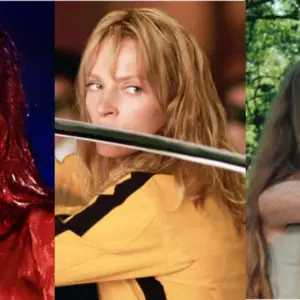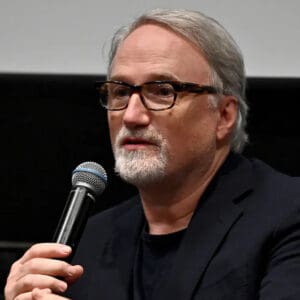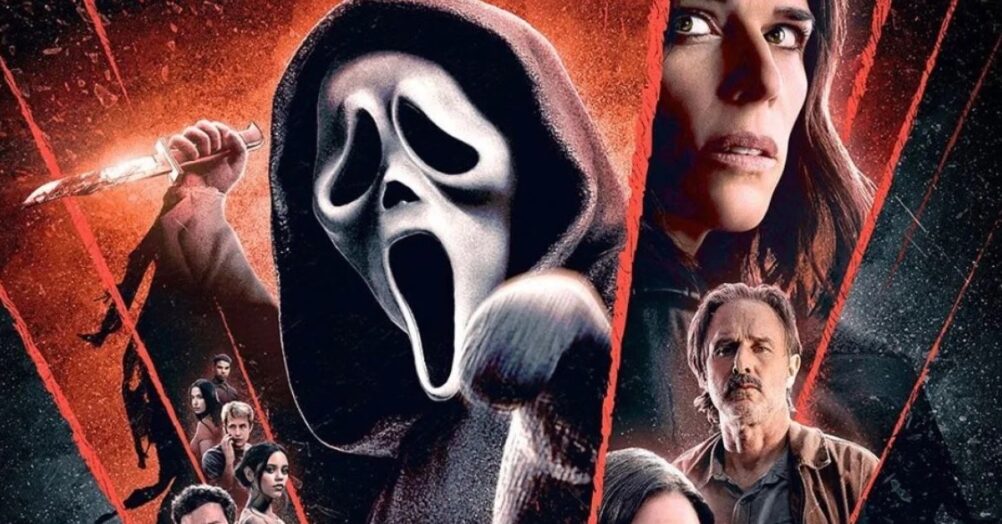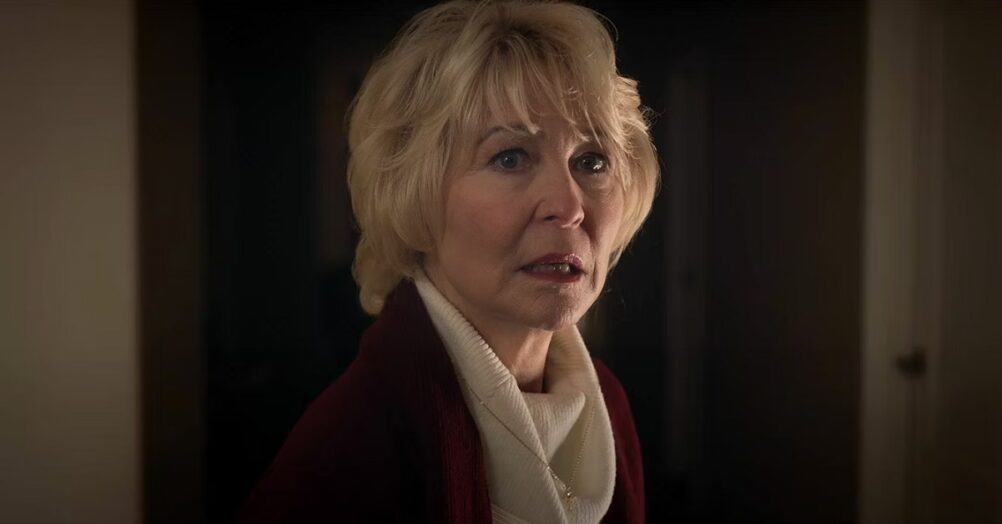Last Updated on August 5, 2021

“I feel that there are real genuine stories about the making of movies and a lot of that gets lost.”
David Fincher not suffer fools gladly. This I know even before I meet the director in a New York City hotel room, where I’m the final obligation the director has while promoting THE GIRL WITH THE DRAGON TATTOO. And as he sits slumped in his chair, firmly rubbing at his forehead, we begin to talk about his relationship with the press.
Gulp.
On that day, Fincher looked particularly exhausting. His sport jacket was tossed on the bed, his black tie yanked down from his neck. He sipped glass of tea and his conversation is punctuated with frequent coughs. But despite this, Fincher remained upbeat, funny and engaged. He talked with both a childlike passion and prodigious knowledge about the art of making movies. In 15 minutes, I only asked him three questions and he had plenty to say. And strangely enough, he barely talked about THE GIRL WITH THE DRAGON TATTOO…
David Fincher
In the movie, one of the central characters is a journalist. As your celebrity as a director increases, how do you find yourself dealing with the press and journalists?
I’m not making watercolors, I realize that. I’m not spending $18 on paper and $40 on paints and using water in jars. I realize I’m painting with a very expensive brush. I understand the symbiosis between the vertically integrated media conglomerate and the need to be part of the peripheral vision during the “selection process” … If the average film-goer doesn’t go to the film ten times a year to the movies and you need to make however many hundreds of millions of dollars to pay off an investment, you’re gonna be part of this transaction.
But I also feel that…I also feel that there are real genuine stories about the making of movies and a lot of that gets lost in the flow of sewage.
I just noticed the other day, I heard Rooney [Mara] talk about what it was like to do “Law & Order” and I’ve heard her spiel on how weird it was and how she’s not connected to that show, she’s not voracious. I live with one. I go to sleep every night with doing doink. So I’m with Rooney and yet I understand that there are people who eat that up.
But to watch her say, “I wasn’t that into that,” get turned into “I’m mortified and embarrassed for having appeared on a Dick Wolf production,” you kinda think, poor kid. If only it didn’t have to happen. If only you could lose 40% of the stupid nonsense. I’d like to make it about the things we had control over.

You once said, “The way I work is just more expensive” than other directors. Could you elaborate on how and why that is?
There was a budget that was done internally on PANIC ROOM, which had the movie being made for $22 million and being shot in 35 days. We shot for $42 million and shot for over 120 days to make that movie. Now, there wouldn’t have been that much CG flying around and going under the cracks of doors. You can make the ASSAULT ON PRECINCT 13 version of that movie but that wasn’t the movie I was going to make. And that wasn’t the movie I pitched them. You gave me your script, I gave you my response to it, here’s what I’d like to do. They say, “Great that sounds interesting, we hadn’t thought of doing it that way.” And yet, they would also say, but here’s the number that we’ve associated with this title.
OK, now is my $42 million version of that movie a better than the $22 million internally circulated budget of that movie? Who knows? The $22 million version of that movie – no one ever talked to anyone who had to direct it. It was simply people saying, “Oh you *could* do that.” But no one’s going out on a limb saying what it would be and how it would be cut together and what would the music be like.
Again, it’s not with pride and it’s not with shame that I say, this is what it costs me to work. I rob from Peter to pay Paul. I’d like to have less people than I currently have to make a movie. I’d like to be more Bergman-esque in terms of the unit and work in a Swedish way as it results to people being more multidisciplinary. I think that all of that would make all of the shooting of a movie a more intimate experience.

It’s actually frustrating for me to have to navigate through 16 people to get to an actor to talk to them. I don’t enjoy that. It makes me frustrated that I can’t just step over and have a conversation with them. But when you have 80 people to do something, that’s what it takes. I work, I think, fairly quickly. But I shoot a lot more versions or iterations of something than most people would. I build a budget and a schedule around that way of working. I’m not going to shoot more than a page a day. Usually it’s 2-3 pages a day.
Now, do I have a lot of helicopters? No. I probably had one day of helicopter stuff. And I’m sure on THE FUGITIVE, Andy Davis probably had ten days of helicopter stuff. You skin the cat differently. I’d rather have one helicopter day and pick those moments.
For instance, we had reference of a bluff overlooking a frozen lake. We said, can someone find where this shot was made from. They said, yes, it’s made from this place in Northern Sweden and you can actually take a camera and go up and film there. So what is it going to take to get that, send a Second Unit team up there to get that shot. And it was $30,000 all-in to send five people on planes and trains to get to this thing and somebody sit with them and run a cable for a generator and take the cameras and wait all day and it cost $30,000. It cost $20,000 to fake it. So I said, OK, let’s do the CG.
There are people who’d look at that and say, “Oh, he had to make the environment his own and put his thumbprint all over it,” and it’s not. It’s just simple economics. Is it work saving $10,000 to do it this way.

You’re often on the forefront of digital trends when it comes to filmmaking. Do you ever see yourself working with IMAX or 3D?
I spent a good portion of my youth lugging VistaVision equipment around so I don’t have the same affinity for gasoline-powered cinema machines as some directors. I’m all for fidelity and…It’s only fitting that when we’re talking about what’s the best way to present the story that you’re pushing and striving to find different ways to make a picture and I think that IMAX is a beautiful, amazing format. The idea of snapping out of 4-perf anamorphic and then suddenly being in 15-perf horizontal, 70mm format…I don’t see how to use that. But I liked THE DARK KNIGHT. And I’ll see MISSION: IMPOSSIBLE and I’m sure I’ll see THE DARK KNIGHT RISES.
But I also think that in the same way 3D was managed to be ushered into this must-have technology and so quickly out the side door of seen that don’t want to see it again, in the hands of people who know what they’re doing with it, all of these things are amazing. Bad photography in service of the right story, can be really effective and good photography not in service of the wrong story, can be irritating. In the hands of people who would push it and use it properly and almost anything can be a benefit. It’s just more expense.




















Follow the JOBLO MOVIE NETWORK
Follow us on YOUTUBE
Follow ARROW IN THE HEAD
Follow AITH on YOUTUBE